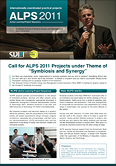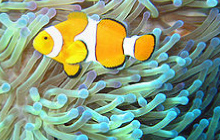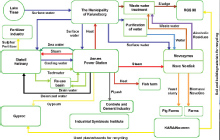Collaborations
Active Learning Project Sequence (ALPS)
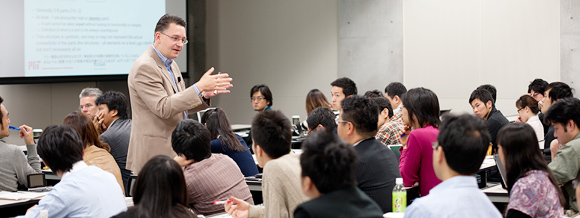
“ALPS” projects provide recommendations on the design of innovative products, services and other systems using system design and management approaches developed in collaboration among Keio University, Massachusetts Institute of Technology (MIT), Stanford University, and Delft Unicersity of Technology (TU Delft).
We examine products and services related to a project, define the problems, learn the requirements of the interested parties, set system requirements, design concepts, propose architecture, repeatedly test and prototype, and then verify our recommendations. ALPS participants gain real-life experience in the design of totally new business models and innovative systems.
How ALPS works
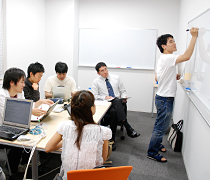 Graduate students at the Keio SDM form small teams (five or six members) and spend about six months working on the selected projects. Teams come from a variety of industries, jobs, areas of expertise, and generations. They work synergistically to incorporate the perspectives and requirements of a broad range of stakeholders and account for the entire lifecycle of the system.
Graduate students at the Keio SDM form small teams (five or six members) and spend about six months working on the selected projects. Teams come from a variety of industries, jobs, areas of expertise, and generations. They work synergistically to incorporate the perspectives and requirements of a broad range of stakeholders and account for the entire lifecycle of the system.
Faculty from MIT, Stanford, and TU Delft make five two-day visits to the campus, (total of 10 days) to guide the projects.
Teams perform detailed analyses of projects and provide you with reports that define products and services and the development process to achieve them. Their goal is to provide an innovative solution that will affect society at large.
Project Characteristics and 2011 Theme
In 2011, ALPS projects will focus on the aspects of “Symbiosis and Synergy system design”.
ALPS 2011’s theme is Symbiosis and Synergy. Students of ALPS will use the latest design thinking and systems engineering approaches to propose novel concepts for symbiosis and synergy. In systems engineering, symbiosis and synergy can mean a construct of different elements working together to produce results not obtainable by any individual elements. The elements can include products, services, people, facilities and policies required to produce system-level results. The value created by the system as a whole, beyond individual and independent contributions, is primarily from the relationship and interaction among the elements (Blanchard, B., 2004)
Keio SDM invites you to propose a theme that can encompass and leverage symbiotic and synergetic relationships relevant to your organization.
Symbiosis and Synergy
The term Symbiosis comes from the in Greek, sýn “with” and bíōsis “living,” describing an interaction between two different organisms living in close physical association, especially to the advantage of both (Oxford Dictionary). In particular, we refer to Mutualistic Symbiosis, a relationship between individuals of different species where both benefit from each other (Ahmadjian, V., Paracer, S., 2000). The term Synergy comes from Greek word syn-ergos, meaning ‘working together’ (Segal-Horn, S., 2004).
Here is a list of sample topics we feel might provide a good entry to ALPS 2011.
1. Symbiotic Mutualism of Clownfish and Sea Anemone
There is a symbiotic mutualism of clownfish and sea anemone as shown in Figure 1. The sea anemone provides protection to the clownfish, as the predators of the clownfish prefer to steer clear of the poisonous tentacles of the sea anemone. After the sea anemone has eaten its meal, the clownfish feeds on the remains of the kill. In return, the clownfish attracts other fishes with its bright colors into the tentacles of the sea anemone. This relationship shows, how living things have evolved relationships, with the help of which, they have ensured their survival.
2. Egyptian Plover and Crocodile
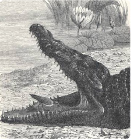
Figure 2: Symbiosis of the Egyptian Plover and the crocodile
A classic example of symbiosis in nature is the relationship between the Egyptian Plover and the crocodile shown in Figure 2. The plovers will peck and feed on the food lodged between the crocodile’s teeth while providing dentistry work.
3. Use of Company’s Byproducts and Waste Energy to Produce Valuable Material and Energy
A notable example of both symbiosis and synergy in industry is the Danish industrial park of Kalundborg. Here one company’s byproducts and waste energy becomes valuable material and energy for another. Various entities such as a large power plant, an oil refinery, a pharmaceutical plant, a plasterboard factory, an enzyme manufacturer, a waste company and the city itself forms an industrial eco-system as shown in Figure 3.
4. Merger of Airline Companies to Obtain Synergy Effect by sCombining Non-overlapping Routes and Sharing a Hub Airport
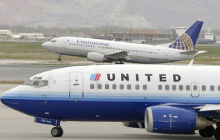
Figure 4 : Merger of United and Continental Airlines to generate synergy effect by combining non-overlapping routes and sharing a hub airport.
Merger of United Airlines and Continental Airlines as shown in Figure 4 will produce synergetic effect by combining routes that barely overlap and by sharing a hub Houston Airport.
5. Use of Electric Power for Home and Plug-In Electronic Vehicles
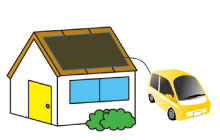
Figure 5 : Use of Electric Power for Home and Plug-In Electronic Vehicles
Many future homes will be using solar power such as solar cells to supply energy for home appliances. At the same time, many homes are expected to own plug-in electronic vehicles. If homes use solar power for both home appliances and plug-in electronic vehicles, they will not have to charge the vehicle batteries at public charge stations. This will reduce the burden of building a huge charge station infrastructure. Thus, if car companies and home power utility companies work together, great synergy effect will be obtained.
6. Artificial Photosynthesis for Symbiosis of Human and Nature
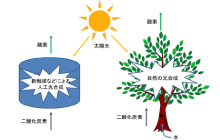
図6:人工光合成による自然と人間の共生
Currently humans produce much more CO2 than the limit which the Earth is able to endure. If the artificial photosynthesis technology is achieved as shown in Figure 6, both human and nature will be able to absorb CO2 from the atmosphere, thus tbalancing with the CO2 exhaust’s by human activities of manufacturing, transportation, etc. This will result in a better symbiosis of human and nature.
The above topics are merely suggestions made to illustrate the range of topics that fall under the ALPS 2011 umbrella.
Keio SDM is intending to arrange occasions to discuss with private companies in wide variety of industries, government institutions, or other organizations in order to find more project topic alternatives for ALPS 2011.
Course Schedule and Key Dates for 2011
The course takes place over a period of six months, from May 2011 until late November 2011, at the Hiyoshi Campus of Keio University.
| May 7 | Project introduction and team forming |
|---|---|
| May 13, 14 | ALPS workshop 1 |
| June 24, 25 | ALPS workshop 2 |
| August 6, 7 | ALPS workshop 3 - Midterm Presentation |
| September 30, October 1 | ALPS workshop 4 |
| November 18, 19 | ALPS workshop 5 - Final Presentation |
Themes and projects to date
2008 theme: “Enhancing Senior Life”
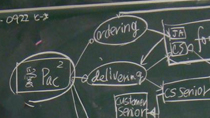 Examples of projects
Examples of projects
“Personal Mobility Services,” “Pet-Type Travel Navigation Robots,” “Senior Safety Jackets,” “Senior Life-Long Learning Programs” and “Second Life Simulation Games”
2009 theme: “Sustainable Community”
Examples of projects
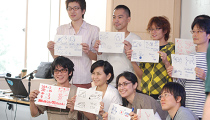 “Use of Empty Urban Schools for State-of-the-Art Water Cultivation Facilities, and Implications for Agricultural Education and Restaurants,” “Falling Birthrates and Implications for Food and Health,” “Personal and Family Communication,” “Soccer Communities,” “Sake Promotion” and “Maintenance of Craftsman Communities”
“Use of Empty Urban Schools for State-of-the-Art Water Cultivation Facilities, and Implications for Agricultural Education and Restaurants,” “Falling Birthrates and Implications for Food and Health,” “Personal and Family Communication,” “Soccer Communities,” “Sake Promotion” and “Maintenance of Craftsman Communities”
2010 theme: “Safety and Security”
Examples of projects
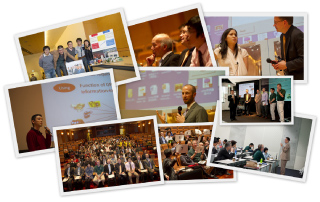 “Portable multi energy backpack system for refrigerating vaccines” (proposer company: Kokusai Kogyo group Infrastructure Innovation Institute, Inc.), “Building New Brand Image of Safety and Security Using Positive Cycle Business Model” (proposer company: Adidas), “Safe and Secure Solar Power Generation in Japan - dual Mode Solar Panel System: Proof of Concept” (proposer company: Delft University of Technology), “Safety Premium Point System” (proposer company: Suzuki Motor Corporation) and “Design of Bicycle Simulator to Reduce the Risks of Traffic Accidents” (proposer company: Toshiba System Technology).
“Portable multi energy backpack system for refrigerating vaccines” (proposer company: Kokusai Kogyo group Infrastructure Innovation Institute, Inc.), “Building New Brand Image of Safety and Security Using Positive Cycle Business Model” (proposer company: Adidas), “Safe and Secure Solar Power Generation in Japan - dual Mode Solar Panel System: Proof of Concept” (proposer company: Delft University of Technology), “Safety Premium Point System” (proposer company: Suzuki Motor Corporation) and “Design of Bicycle Simulator to Reduce the Risks of Traffic Accidents” (proposer company: Toshiba System Technology).
Voices from ALPS Instructors

Olivier L. de WECK, Ph.D. Associate Professor Engineering Systems Division and Department of Aeronautics & Astronautics, MIT
